GENALYTE Inc.
CLOUDLAB
As the leader of CloudLab’s Global Experience Design (GXD) team, my primary responsibility is to oversee the design and user experience aspects of our healthcare SaaS platform. My role is multifaceted and involves a blend of strategic planning, team leadership, and hands-on design work.
Goal #1
CloudLab
Cloud-based Blood Test Result Processing
At CloudLab, I spearheaded the Global Experience Design (GXD) team, focusing on creating a user-centric, accessible, and data-driven Health Care SaaS platform. I established a cohesive design language and system, ensuring brand consistency across all digital assets. Made informed design decisions that aligned with both user needs and business goals. I also ensured that all design elements complied with FDA and other healthcare regulations. Through strategic planning, prototyping, and extensive usability testing, I played a pivotal role in modernizing diagnostics and setting new industry standards.
Goal
CloudLAB revolutionizes blood testing by emphasizing the mantra, ‘Move Data, Not Blood.’ With a commitment to efficacy and accuracy, CloudLAB processes blood samples onsite, delivering results within 30 minutes. Once analyzed, results are uploaded to the cloud for review by a Clinical Lab Scientist. Upon approval, physicians are promptly notified, enabling immediate consultation with patients. This streamlined approach ensures timely, accurate, and efficient patient care.
Challenge
The primary challenge at CloudLab was meeting the stringent 30-minute time crunch for test approvals while maintaining accuracy and compliance. This tight window posed risks of errors by CLS monitors and added pressure on the system’s UX design to be both efficient and intuitive. Balancing speed, accuracy, and regulatory compliance became a complex juggling act that required innovative solutions and meticulous planning.
Approach
Our approach was a blend of strategic planning, data-driven decision-making, and user-centric design. We focused on creating a comprehensive design system and high-fidelity prototypes for testing. The strategy also emphasized accessibility, ensuring that the platform could be used by people with various disabilities, and compliance with healthcare regulations. This multi-faceted approach was key to overcoming the challenges and achieving our goals.
My Role
- Strategic Design Thinking: Applied design thinking to deliver end-to-end UX solutions.
- Product Development: Designed and enhanced B2C, B2B2C, Desktop Client Enterprise Platform.
- Brand Consistency: Developed comprehensive brand guidelines, including Design System, Design Language, and color themes.
- Compliance: Ensured designs met FDA and other healthcare regulations.
- Asset Creation: Generated compelling assets for proposals and presentations.
- User-Centric Approach: Conducted WAG/WAG2.0 evaluations, user needs assessments, and developed user profiles.
- Simplicity Over Complexity: Embraced a design approach that prioritizes intuitive user experiences.
- Team Collaboration: Fostered collaboration among interdisciplinary teams.
- Agile Workflow: Thrived in an Agile/Lean startup environment.
- User Flow Mapping: Created journey maps to define user flows.
- Task Prioritization: Effectively multitasked in a startup environment.
- Usability Testing: Conducted extensive usability and A/B testing.
- ROI Measurement: Measured UX outcomes against the desired ROI.
- User Feedback: Facilitated focus group sessions and used HotJAR for real-time usability testing.
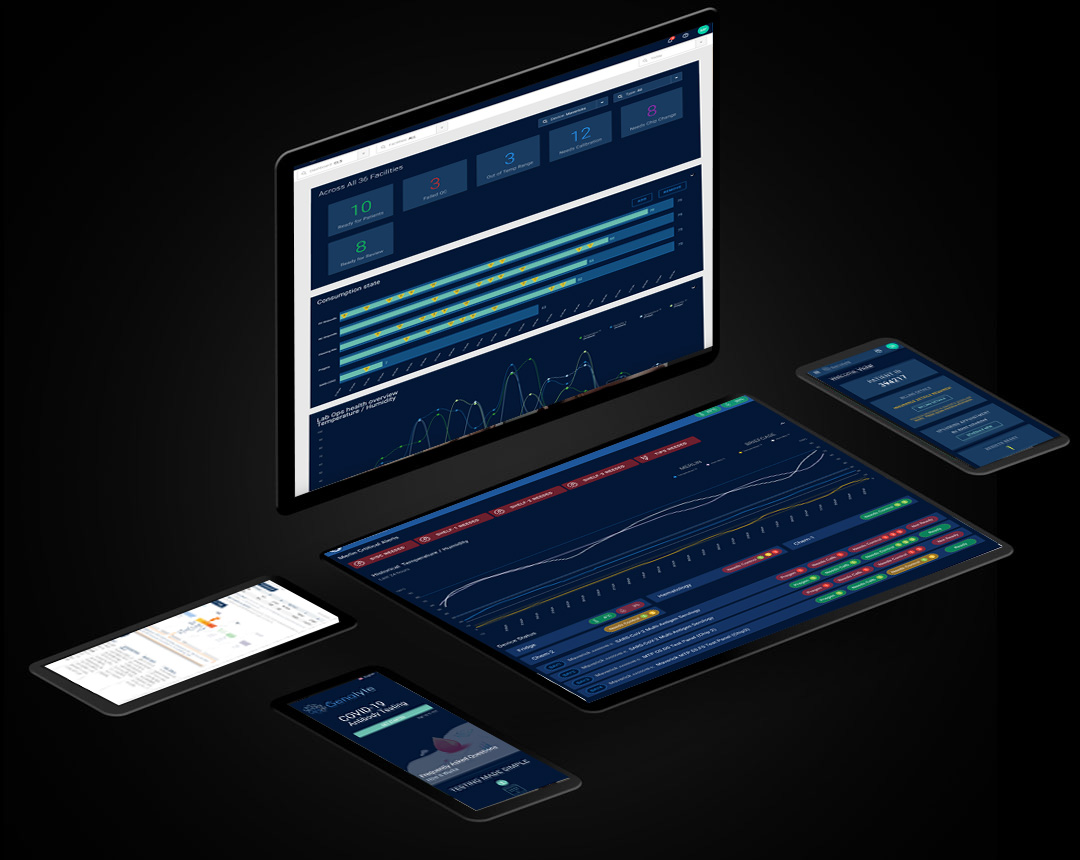
Achievements:
Modernizing Diagnostics
- Successfully revolutionized the diagnostics landscape by integrating cutting-edge technology and analytics, making diagnostics faster, more accurate, and easily accessible.
Pioneering Remote Monitoring
- Implemented a proprietary technology that enables remote monitoring from a central lab, setting a new standard in modern diagnostics and lab management.
Instrument Calibration
- Achieved ongoing calibration of lab instruments, significantly improving the accuracy and reliability of diagnostic results.
Rapid Onsite Testing
- Enabled central lab oversight with rapid, onsite testing capabilities, reducing the turnaround time for diagnostic results and increasing patient satisfaction.
User-Friendly Dashboard
- Launched a UX dashboard that allows CLS monitors to review, approve, or reject diagnostic tests within a 30-minute window, streamlining operations and improving efficiency.
Multi-Channel Notifications
- Integrated a real-time notification system that informs both the client and the physician once a diagnostic test is approved, facilitating quicker medical consultations.
Retail Partnerships
- Expanded the platform’s reach by placing kiosks in retail stores like CVS and Rite Aid, allowing clients to order diagnostic tests directly.
Versatile Deployment
- Successfully deployed the CloudLab technology, also known as Merlin, in various settings including doctor’s offices, labs like Labcorp, and hospitals, demonstrating its versatility in modern diagnostics.
Error Reduction
- Implemented features that contributed to a 20% reduction in errors made by CLS monitors during the diagnostic testing and approval process.
Phase-wise Rollout
- Executed a phase-wise rollout strategy, allowing for iterative improvements based on user feedback and data analytics.
Data-Driven Decision Making
- Utilized analytics to optimize the dashboard layout and other features, making data-driven improvements that enhanced user interaction and satisfaction.
Training Modules
- Introduced ongoing training for CLS monitors, improving their efficiency and reducing the likelihood of diagnostic errors.
Regulatory Compliance
- Ensured that the platform is in compliance with FDA and other healthcare regulations, making it a reliable choice for modern diagnostics.
Increased Visibility
- Achieved increased platform visibility through targeted marketing campaigns, resulting in a significant uptick in user adoption rates.
AI-Based Predictive Analytics (Future Plan)
- Laid the groundwork for the integration of AI-based predictive analytics to further enhance decision-making and efficiency in diagnostics.
The achievements of the CloudLab platform not only showcase its potential to revolutionize central lab operations but also its significant impact on modernizing the diagnostics industry, making healthcare more efficient, accessible, and reliable.
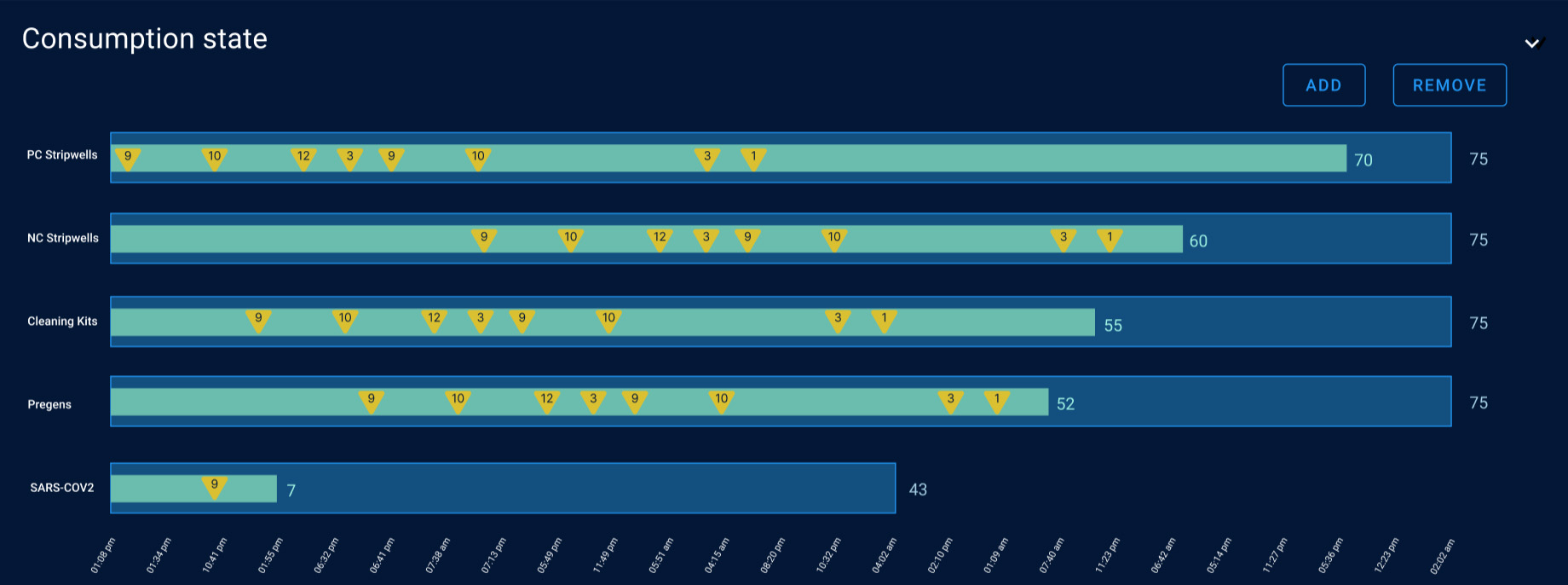
The Approach:
Research and Needs Assessment
- Initial Phase: Conducted comprehensive market research and needs assessment to identify gaps in the current diagnostics landscape and design requirements.
Strategic Planning and Design Language
-
Blueprint Creation: Developed a strategic blueprint that outlined the platform’s objectives, target audience, and key features, focusing on modernizing diagnostics.
-
Design Language: Established a cohesive design language that encapsulated the brand’s values, vision, and objectives.
Creating Design System
- Systematic Approach: Created a comprehensive Design System that included guidelines for UI components, typography, color schemes, and interactions, ensuring consistency across all digital assets.
Sketch Whiteboarding and Workflow Diagrams
- Conceptualization: Utilized Sketch whiteboarding sessions to brainstorm ideas, create workflow diagrams, and map out the user journey, providing a visual guide for the development process.
Journey Mapping and Design
- User-Centric Planning: Created detailed journey maps to understand user flows, pain points, and opportunities, which informed the design process.
End-to-End Prototyping
- Prototyping: Developed high-fidelity functional prototypes using tools like Figma and Sketch, simulating the end-to-end user experience for testing and validation.
Accessibility UX
- Inclusive Design: Incorporated accessibility features into the UX design, ensuring that the platform is usable by people with various disabilities.
Technology Integration
- Tech Stack: Selected a robust technology stack that would support remote monitoring, real-time notifications, and data analytics.
Utilizing Brand Language Across the Company
- Brand Consistency: Applied the established design language and design system across all company platforms and communications to ensure brand consistency.
Data-Driven Approach
-
Analytics and Optimization: Utilized data analytics tools to inform design decisions, feature implementations, and user experience optimizations.
-
ROI Measurement: Employed data analytics to measure the intended UX outcomes against the desired ROI, enabling data-driven improvements.
Reusability of Experiences
- Design Components: Developed reusable design components and experiences that could be easily adapted for different healthcare settings and platforms, enhancing efficiency and consistency.
Testing the Experience Before Building
- Pre-Build Testing: Conducted extensive usability testing on the prototypes to validate the design and user experience before proceeding to the development phase.
Phase-wise Implementation
-
Pilot Testing: Launched a pilot version with basic features to a limited audience for initial feedback.
-
Iterative Development: Based on the pilot feedback and data analytics, made necessary adjustments and proceeded to a full-scale launch.
Compliance and Calibration
-
Regulatory Measures: Ensured all features were in compliance with FDA and other healthcare regulations.
-
Instrument Calibration: Integrated ongoing calibration features to ensure the reliability and accuracy of diagnostic tests.
Training and Skill Development
- CLS Training: Introduced training modules for CLS monitors to reduce errors and improve efficiency.
Marketing and Visibility
- Targeted Campaigns: Conducted targeted marketing campaigns to increase platform visibility and user adoption rates.
Feedback Loop
- User Feedback: Established a feedback loop through surveys and real-time analytics to continuously improve the platform.
Future-Proofing
- AI Integration Plans: Laid the groundwork for future AI-based predictive analytics to further enhance the platform’s capabilities.
Scalability
- Expansion Plans: Designed the platform to be scalable, allowing for future expansions into different healthcare settings and even into mobile platforms.
By adopting a meticulously planned, data-driven, design-centric, and inclusive approach that emphasizes reusability of experiences, brand consistency, accessibility, and thorough pre-build testing, the CloudLab platform has set new standards in modernizing diagnostics. This comprehensive and iterative approach has been instrumental in the platform’s success, making it a game-changer in both the healthcare diagnostics and design industries.

Strategy:
Phase 1: Research and Discovery
- Objective: Understand the market, user needs, and technological requirements.
- Key Activities: Market research, user interviews, and technology assessment.
- Deliverables: Research report, user personas, and technology stack recommendations.
Phase 2: Planning and Design Language
- Objective: Develop a strategic blueprint and establish a cohesive design language.
- Key Activities: Strategic planning sessions, design language formulation.
- Deliverables: Strategic blueprint, design language guidelines.
Phase 3: Design System and Prototyping
- Objective: Create a comprehensive design system and develop prototypes.
- Key Activities: UI/UX design, Sketch whiteboarding, end-to-end prototyping.
- Deliverables: Design system documentation, functional prototypes.
Phase 4: Accessibility and Inclusivity
- Objective: Ensure the platform is accessible to all users.
- Key Activities: Accessibility audits, inclusive design practices.
- Deliverables: Accessibility report, updated prototypes with accessibility features.
Phase 5: Technology Integration and Development
- Objective: Build the platform based on the approved prototypes and design system.
- Key Activities: Backend and frontend development, API integrations.
- Deliverables: Beta version of the platform.
Phase 6: Pilot Testing and Data Collection
- Objective: Validate the platform’s functionality and user experience.
- Key Activities: Limited release for pilot testing, data collection.
- Deliverables: Pilot test report, data analytics dashboard.
Phase 7: Iterative Development and Optimization
- Objective: Make necessary adjustments based on pilot testing and data analytics.
- Key Activities: Code revisions, UX/UI enhancements, data-driven optimizations.
- Deliverables: Updated version of the platform, optimization report.
Phase 8: Compliance and Calibration
- Objective: Ensure all features comply with healthcare regulations and calibrate instruments.
- Key Activities: Compliance checks, instrument calibration.
- Deliverables: Compliance certificates, calibration logs.
Phase 9: Full-Scale Launch and Marketing
- Objective: Roll out the platform to the broader market.
- Key Activities: Marketing campaigns, PR activities, full-scale launch.
- Deliverables: Marketing materials, press releases, live platform.
Phase 10: Ongoing Improvement and Scalability
- Objective: Continuously improve the platform and prepare for future scalability.
- Key Activities: User feedback collection, feature updates, scalability planning.
- Deliverables: Updated platform versions, scalability blueprint.
By following these strategic phases, CloudLab aims to create a platform that not only modernizes diagnostics but also sets new standards in healthcare technology and design. Each phase is meticulously planned to ensure that the platform is data-driven, design-centric, and inclusive, making it a game-changer in the industry.
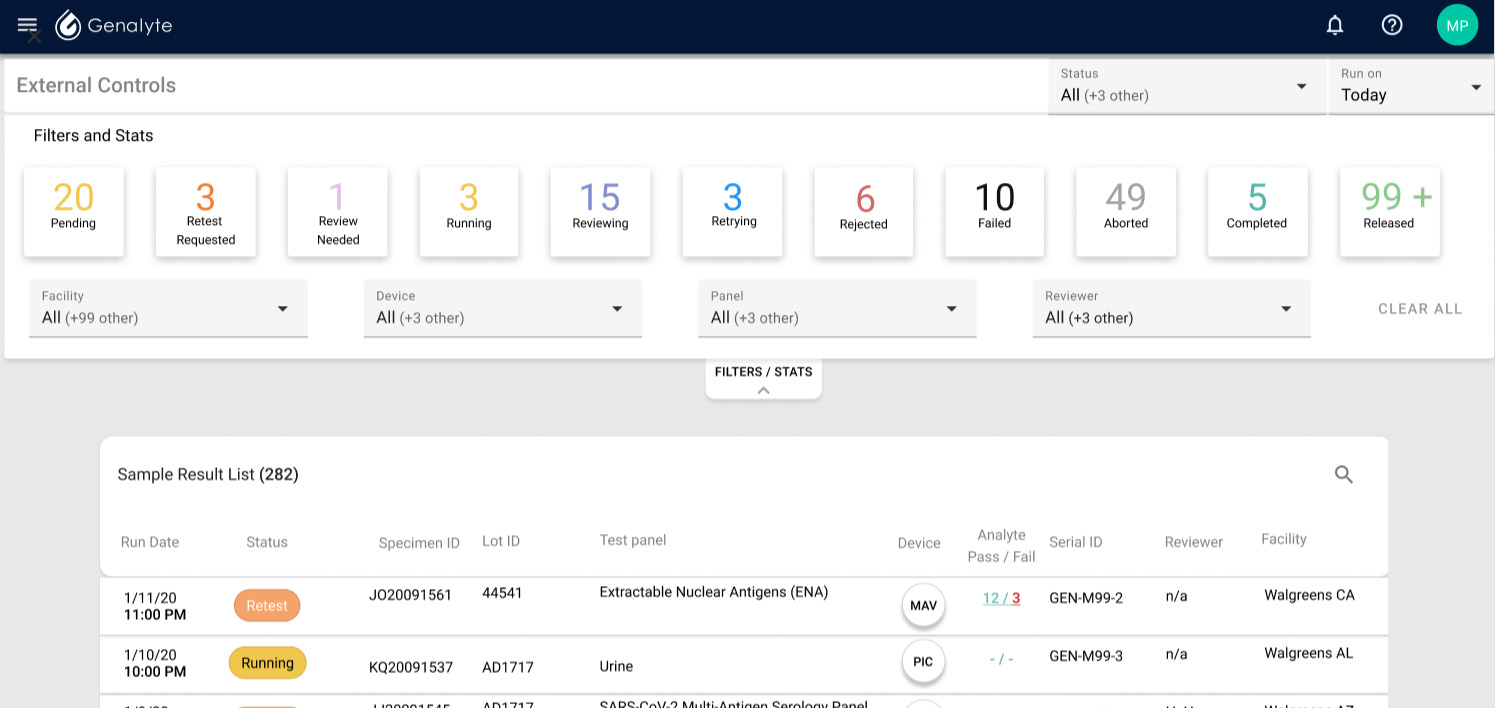
Key Metrics:
To ensure the platform’s efficiency and effectiveness, CloudLab employs a robust set of key metrics that are accessible to CLS monitors for daily monitoring. These metrics serve as performance indicators and guide data-driven decision-making. Here are the key metrics:
-
Total Tests Conducted: This metric provides an overview of the total number of tests that have been processed or conducted within a specific timeframe, usually daily.
-
Pending Tests: This metric tracks the number of tests that are currently in the queue, awaiting review or approval by the CLS monitors.
-
Approved Tests: This metric shows the number of tests that have been successfully reviewed and approved, providing insights into the platform’s efficiency and the team’s productivity.
-
Retest Requested: This metric captures the instances where a retest has been requested, either due to inconclusive results or other issues. It helps in identifying areas that may require additional training or process refinement.
-
Other States: This is a composite metric that captures various other conditions or states of the tests, such as ‘Under Review’, ‘Rejected’, ‘In Progress’, etc. It provides a more nuanced view of the workflow and helps in identifying bottlenecks or areas for improvement.
These key metrics offer a comprehensive snapshot of daily operations and are instrumental in making real-time adjustments to the platform. They also serve as valuable data points for assessing the platform’s success in meeting its goals, including the critical 30-minute approval window.
Data-Driven Decisions:
At CloudLab, data-driven decision-making is at the core of our operational and strategic planning. We believe that leveraging data analytics not only enhances efficiency but also significantly improves the user experience and the overall quality of our healthcare solutions.
Key Metrics for Informed Decisions
We employ a set of key metrics, accessible to CLS monitors for daily tracking, that serve as performance indicators. These metrics include the total number of tests conducted, pending tests, approved tests, retests requested, and various other states. These data points offer a comprehensive snapshot of daily operations and are instrumental in making real-time adjustments to the platform.
Real-Time Analytics
Our platform features real-time analytics that allow us to monitor performance continuously. This enables us to identify trends, bottlenecks, and areas for improvement almost instantaneously, thereby facilitating quick and informed decisions.
ROI Measurement
We use data analytics to measure the intended user experience outcomes against the desired ROI. This approach helps us understand the effectiveness of our design decisions and operational strategies, allowing for data-driven improvements.
User Feedback and Adaptation
We have established a feedback loop that captures user feedback and other usability metrics. This data is analyzed to make user-centric modifications to the platform, ensuring that we are continually aligned with user needs and preferences.
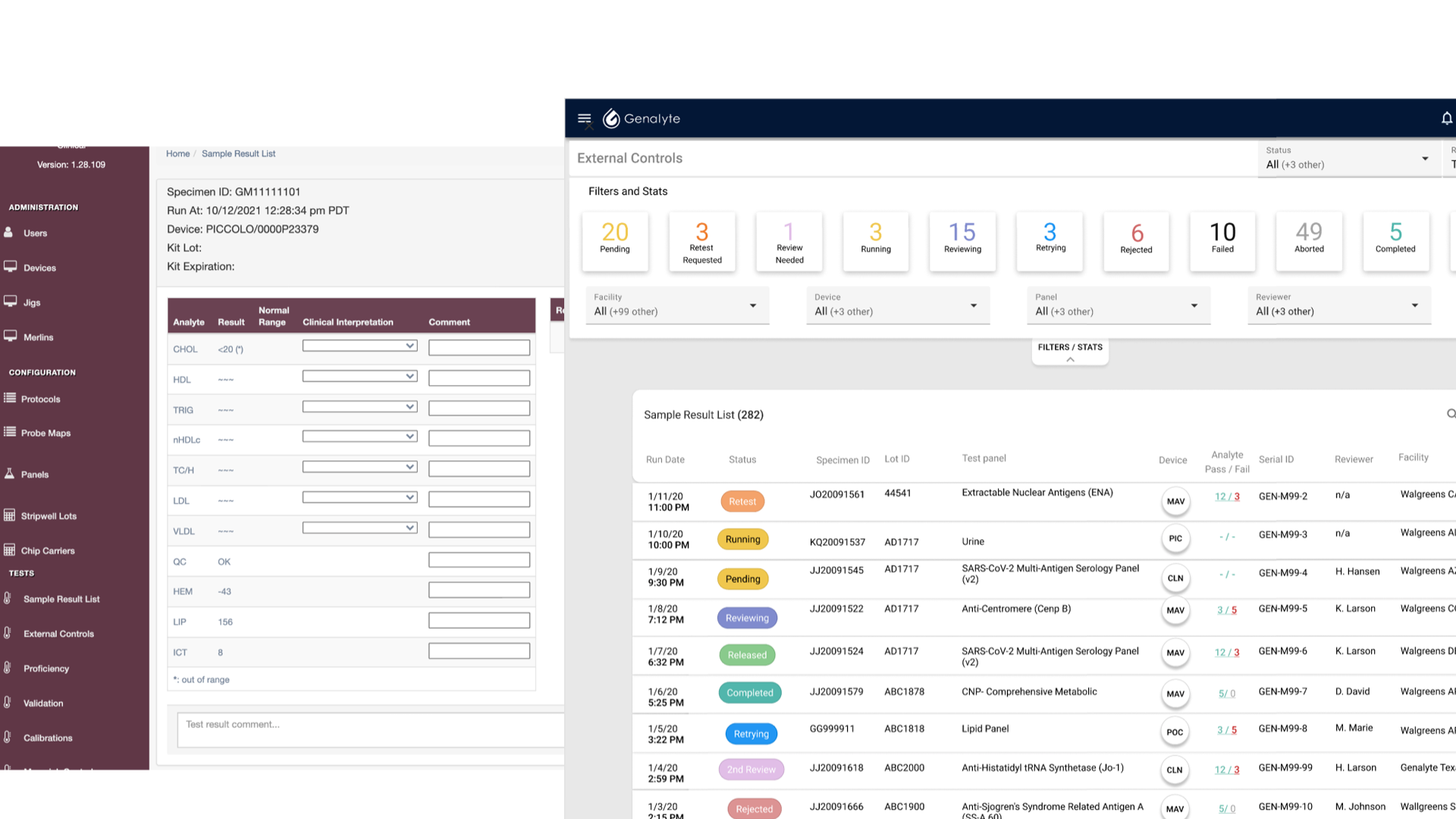
Key Learnings and Takeaways:
The Importance of User-Centric Design
- Learning: No matter how advanced the technology, the user experience is paramount.
- Takeaway: Investing in a comprehensive UX/UI design system pays off in user satisfaction and operational efficiency.
Balancing Speed and Accuracy
- Learning: Meeting the 30-minute approval window is challenging but crucial for user trust.
- Takeaway: Implementing real-time analytics and key performance metrics helps in achieving this balance effectively.
Regulatory Compliance
- Learning: Navigating healthcare regulations, especially FDA guidelines, is complex but non-negotiable.
- Takeaway: Early integration of compliance checks in the development cycle saves time and resources in the long run.
The Value of Data-Driven Decisions
- Learning: Data analytics provide invaluable insights into user behavior, system performance, and ROI.
- Takeaway: A data-driven approach should be integrated into all aspects of business, from design to compliance to marketing.
Team Collaboration and Cross-Functionality
- Learning: A cross-functional team that collaborates effectively is key to solving complex problems.
- Takeaway: Fostering a culture of open communication and collaboration leads to more innovative solutions.
Accessibility Matters
- Learning: Making the platform accessible to people with disabilities is not just ethical but also expands the user base.
- Takeaway: Accessibility should be a built-in feature, not an afterthought.
Resource Allocation and Scalability
- Learning: Efficient use of resources is crucial for scalability.
- Takeaway: Data analytics can guide resource allocation decisions, making the platform more scalable.
The Power of Feedback Loops
- Learning: User feedback is a goldmine of information for continuous improvement.
- Takeaway: An established feedback loop ensures that the platform evolves based on real user needs and preferences.
Adaptability is Key
- Learning: The healthcare landscape is ever-changing, and adaptability is crucial for long-term success.
- Takeaway: Building the platform with future scalability in mind ensures it can adapt to new challenges and opportunities.
By reflecting on these key learnings and takeaways, CloudLab is better positioned to navigate future challenges and continue its mission of modernizing diagnostics through innovative, user-centric, and data-driven solutions.
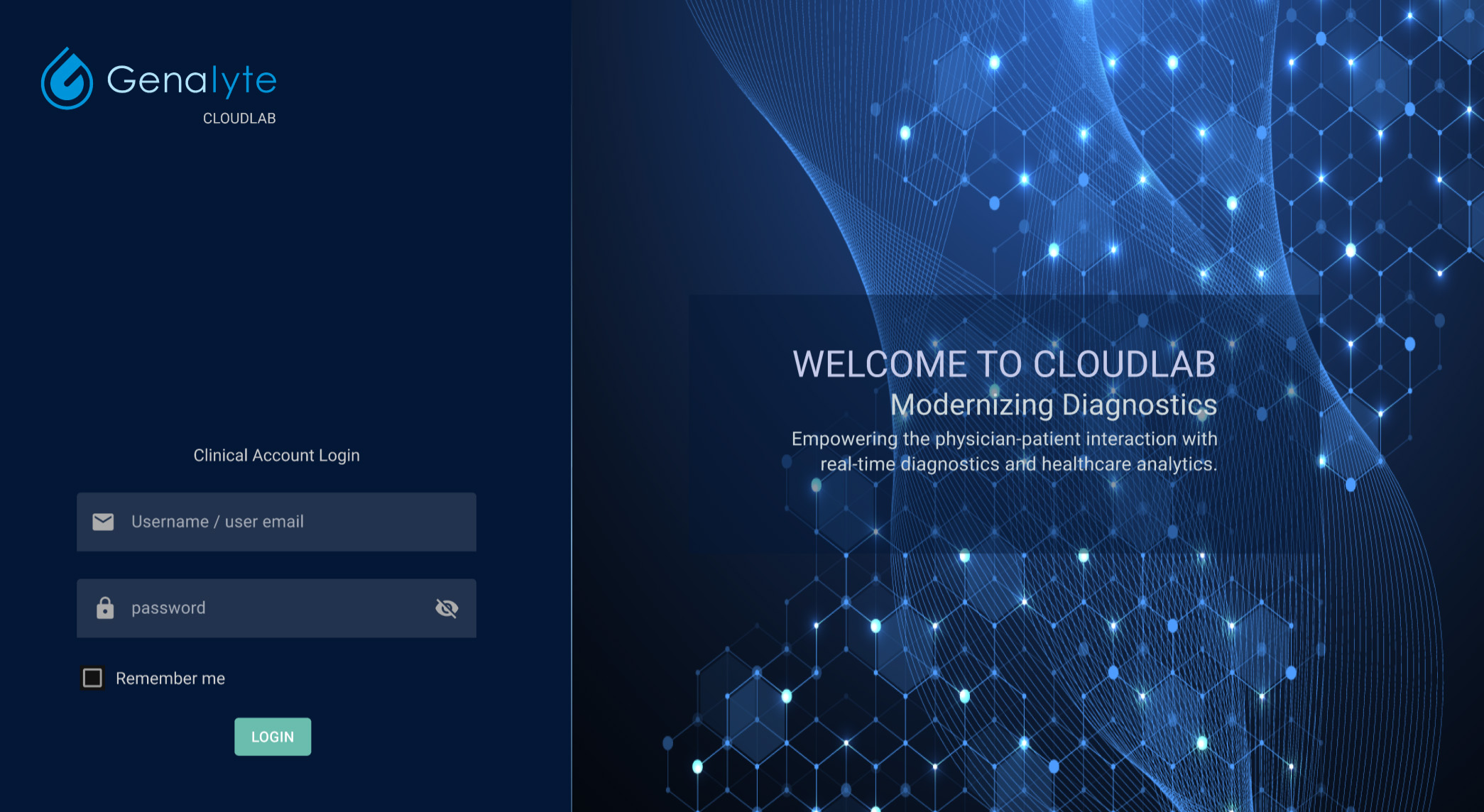
Optimization:
Optimization is a cornerstone of CloudLab’s operational philosophy, aimed at enhancing both the user experience and the platform’s overall performance. Here’s how we approach optimization:
User Experience (UX) Optimization
- Goal: To create an intuitive, user-friendly interface that meets the needs of both CLS monitors and end-users.
- Strategy: Utilize A/B testing, user feedback, and data analytics to continually refine the UX design.
Workflow Efficiency
- Goal: To streamline the workflow for CLS monitors, especially focusing on the critical 30-minute window for test approvals.
- Strategy: Implement real-time analytics and key performance indicators to identify bottlenecks and areas for improvement.
Resource Utilization
- Goal: To make the most efficient use of both human and technological resources.
- Strategy: Use data analytics to guide resource allocation, ensuring optimal productivity and cost-effectiveness.
Compliance and Quality Assurance
- Goal: To ensure that all features and functionalities comply with healthcare regulations.
- Strategy: Integrate compliance checks into the development and testing phases, using data to track and ensure compliance.
Scalability
- Goal: To build a platform that can easily adapt to increasing user numbers and additional features.
- Strategy: Employ modular architecture and cloud-based solutions to ensure that the platform can scale seamlessly.
Data-Driven Decision Making
- Goal: To make informed decisions that align with user needs and business objectives.
- Strategy: Establish a robust data analytics framework that provides actionable insights for decision-making.
Accessibility
- Goal: To make the platform accessible to as wide an audience as possible, including people with disabilities.
- Strategy: Incorporate accessibility features and conduct regular audits to ensure compliance with accessibility standards.
ROI Maximization
- Goal: To achieve the best possible return on investment for all stakeholders.
- Strategy: Continuously measure key performance indicators against set objectives and adjust strategies accordingly.
Through these optimization strategies, CloudLab aims to create a platform that is not only efficient and user-friendly but also scalable and compliant with healthcare regulations. This holistic approach to optimization is key to CloudLab’s mission of modernizing diagnostics and setting new industry standards.
Visibility:
Visibility is a critical aspect of CloudLab’s operational strategy, ensuring that all stakeholders have real-time access to essential data and insights. This transparency fosters trust, enhances collaboration, and enables quick decision-making. Through dashboards and real-time analytics, CLS monitors can track key metrics like pending tests, approvals, and retests, thereby streamlining workflow. Stakeholders and investors are also kept in the loop with regular reports and updates, ensuring alignment with business objectives. Overall, enhanced visibility contributes to CloudLab’s commitment to accountability, efficiency, and data-driven optimization.
Iterations:
Iterations are central to CloudLab’s approach for continuous improvement. We employ a cycle of prototype testing, feature releases, and workflow optimization to refine our platform. Each iteration is guided by real-world data, user feedback, and key performance metrics. This allows us to make informed adjustments, whether it’s enhancing user experience, ensuring compliance, or preparing for scalability. Through this iterative process, CloudLab remains agile, user-focused, and aligned with business objectives, setting us apart in the healthcare technology industry.
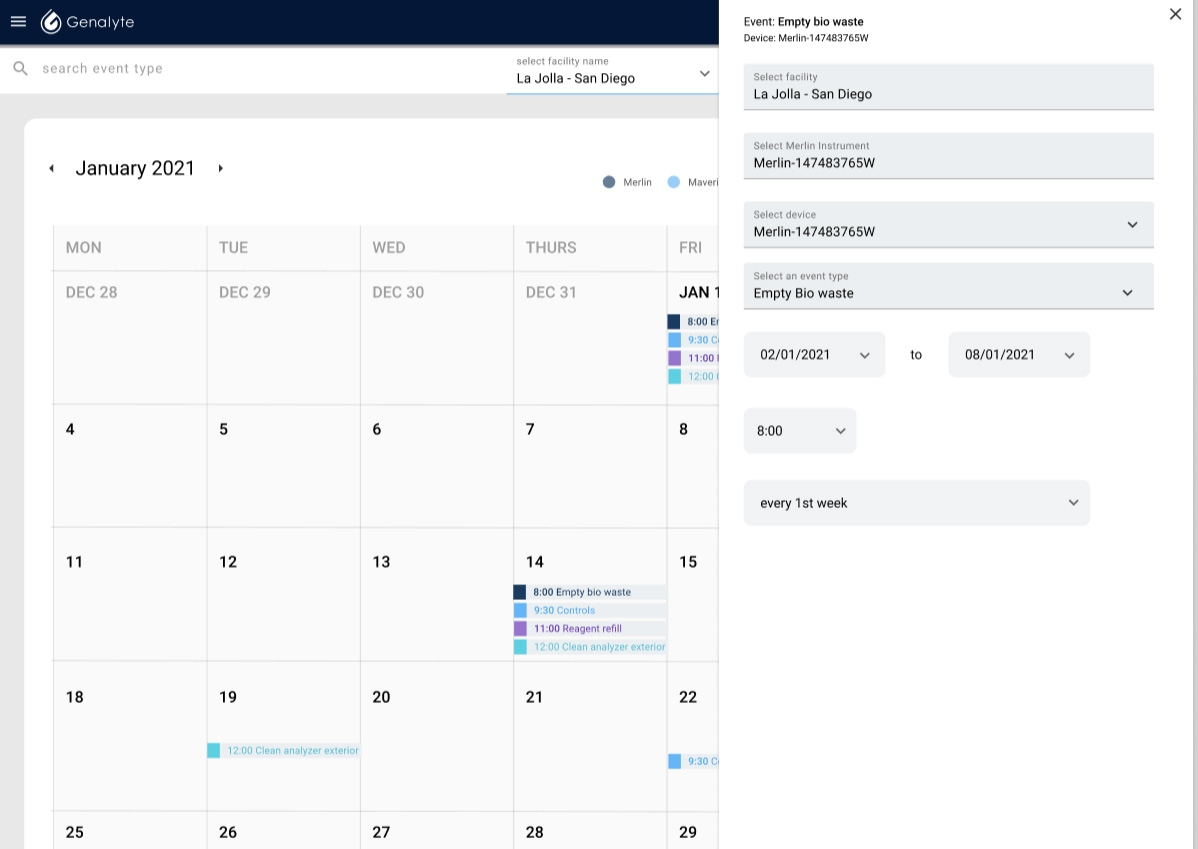
Next Steps:
As we move forward, CloudLab has several key next steps planned to continue our trajectory of innovation and excellence:
User Experience Enhancements
- Next Step: Further refine the UX based on the latest round of user feedback and data analytics.
Feature Expansion
- Next Step: Roll out additional features that have been in the prototype and testing phases, focusing on those that add the most value to users.
Compliance Updates
- Next Step: Conduct a comprehensive review of healthcare regulations to ensure that upcoming features are compliant.
Data-Driven Strategies
- Next Step: Implement more advanced data analytics tools to provide deeper insights into user behavior and system performance.
Scalability
- Next Step: Begin the development of architecture that can support a larger user base and more complex features.
Stakeholder Engagement
- Next Step: Schedule quarterly reviews with stakeholders to provide updates on progress, key metrics, and future plans.
Accessibility
- Next Step: Conduct an accessibility audit to identify areas for improvement and ensure the platform is inclusive for all users.
By focusing on these next steps, CloudLab aims to further solidify its position as a leader in healthcare technology, offering a platform that is not only efficient and user-friendly but also scalable and compliant with industry standards.
